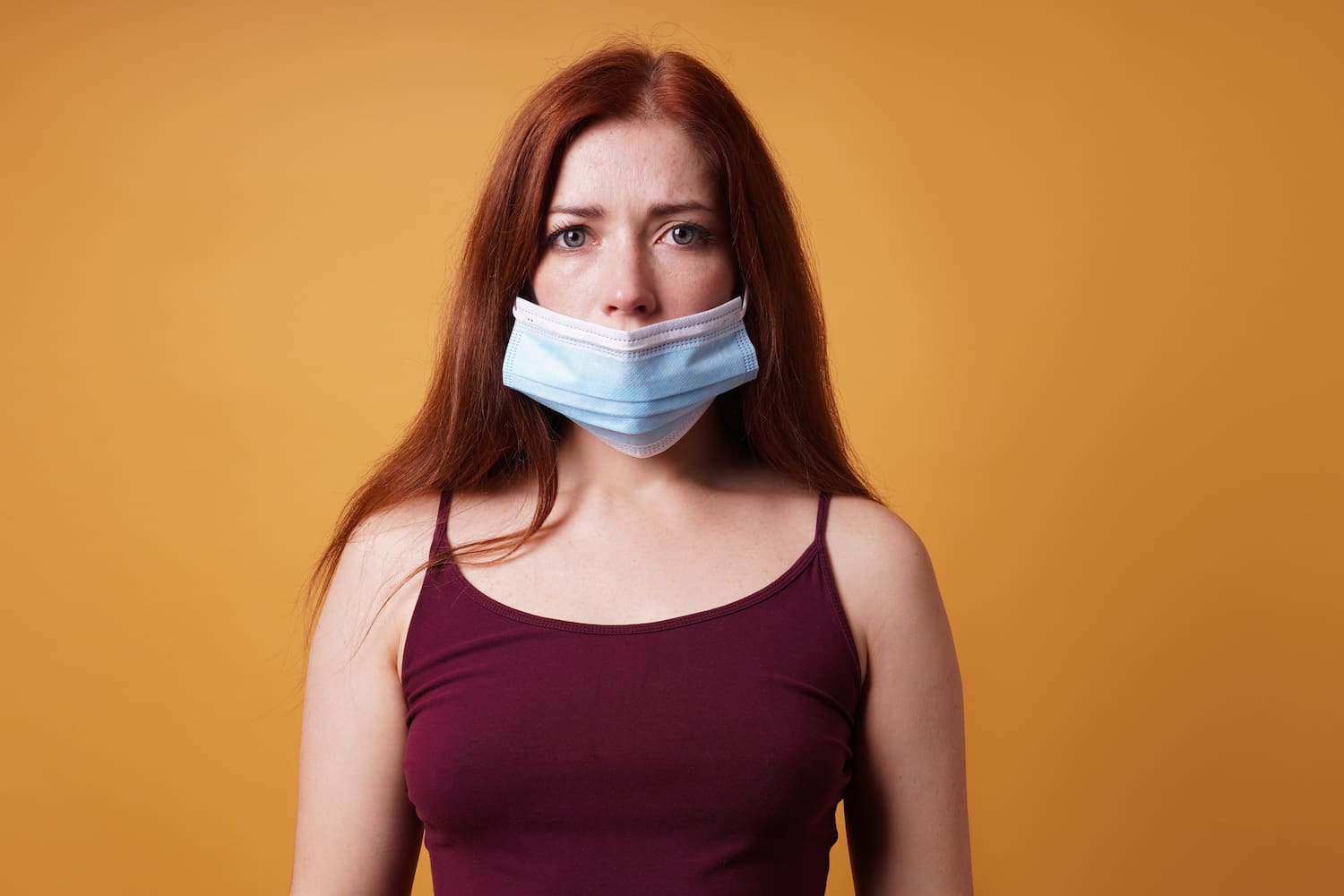With community transmission ramping up in Australia, face masks are here to stay for the near future. Not everyone infected with coronavirus has symptoms, and wearing a face mask can help prevent you from unknowingly passing on the virus to others. It may also help protect you to some lesser degree from the large respiratory droplet fallout of other people who may have COVID-19. Here are some face mask fails you don’t want to be making.
1. Wearing your face mask inside out
Yes, it’s easily done. Just to be clear, the coloured side (often blue) of disposable surgical masks should be on the outside – and the white side should be next to your face.
2. Leaving your nose uncovered by the mask
It may be easier to breathe with your nose out, but the face mask needs to cover your airways. You can infect other people by coughing, sneezing or talking with an uncovered nose and mouth.
Similarly, wearing the mask too loose is not going to help. It needs to be snug to your face.
3. Cutting a hole in the mask to make it easier to breathe
Yes, that’s happened too. If you feel your mask is making breathing difficult, try loosening the straps to make it less tight on the sides of your face (without losing the snug fit) or investigate another type of mask.
4. Wearing the face mask on your chin only
Goes without saying, but while it may make it easier to breathe and speak, wearing a face mask only on your chin is not going to stop you breathing out, coughing or sneezing coronavirus particles on to other people. Not everyone who has coronavirus has symptoms, so you could be unknowingly passing the virus to those around you.
5. Wearing the nosepiece at the bottom instead of the top
Some masks have a strip of metal at the top of the mask. You should bend this around the bridge of your nose to ensure a snug fit. The nosepiece can’t do its job and won’t be effective at the bottom of your mask.
6. Touching and adjusting your mask frequently
Wearing a mask and then fiddling with it, touching it and pulling it up and down defeats the purpose of wearing one. It takes a bit of practice to wear a mask effectively. It may get hot under the mask, your face may itch, or people may have trouble understanding what you are saying.
All of these situations may cause you to adjust the mask or pull it aside for a bit. But these actions may cause you to touch your face, potentially contaminating yourself with coronavirus you’ve picked up on your hands.
Pulling the mask aside will leave your airways exposed and put other people potentially at risk of being infected. If you pull the mask aside to eat, you may contaminate your food with what’s on the mask.
Always practise hand hygiene before and after adjusting your mask.
7. Thinking a face mask replaces social distancing
Wearing a mask should not mean we stop social and physical distancing, hand hygiene and all the other protective measures we are taking. Face masks are just one part of our protective response. They are not failsafe.
Wearing a facemask should not make us drop our guard. Yes, face masks will reduce the risk of us transmitting the virus to other people, but they aren’t a silver bullet.
8. Wearing a damp or dirty mask
A face mask that’s damp or wet won’t be effective and needs to be changed. If it’s a disposable mask don’t reuse it.
Don’t wear a mask more than once. Wash ‘dirty’ reusable cloth masks in the washing machine with detergent on a hot wash and then let them dry completely in the air – in direct sunlight is good. Don’t microwave them.
Dispose of single-use face masks responsibly in the rubbish, not in a supermarket trolley.
9. Pulling your mask up or down to have a cigarette
Don’t be a meme. Ben Affleck, we’re looking at you here.
Here’s some advice from the World Health Organization on how to wear a non-medical fabric mask.


